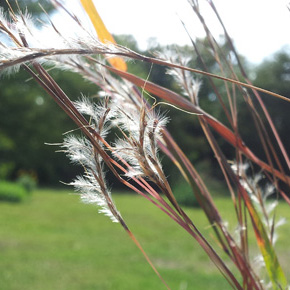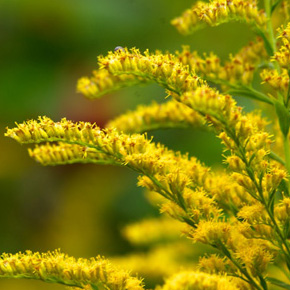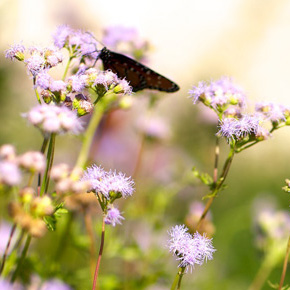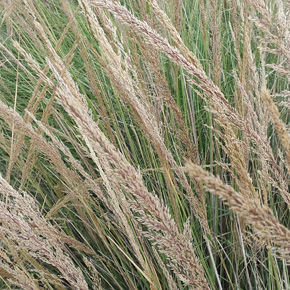A rain garden, with its verdant pools and lush-looking vegetation, can evoke images of an unexpected oasis in our often-arid climate. But did you know rain gardens are also good for the environment?
What is a rain garden and why should I plant one?
A rain garden is a shallow, vegetated depression, usually 6-9 inches deep. To understand why a rain garden is important, it helps to know a little about storm water. All water that flows off of impervious surfaces and into waterways is called storm water runoff. Various types of impervious cover – parking lots, streets, homes, buildings and the like – contribute to flooding and can impair the health of our ecosystem.
As storm water in our area makes its way across lawns, parking lots and streets, it picks up harmful chemicals such as fertilizers, motor oil, pesticides, herbicides, bacteria and other contaminants. These end up in streams, rivers and eventually the Gulf of Mexico. Runoff can also affect the temperature of those waterways. All of these things negatively impact water dwelling organisms, the animals that feed on those organisms and so on.
Rain gardens filter pollutants, encourage groundwater infiltration, discourage flooding and can provide much needed habitat for our native birds and pollinators.
But don’t let the term rain garden mislead you. Newly installed plants are going to require some water to become established and maybe a sprinkle here and there during the dog days of summer if there’s no rainfall.
Steps to create a successful rain garden
- Watch your yard during and after a rain to identify areas where water tends to pool. In many instances you can watch the downspouts on your gutters and follow the water.
- Review San Antonio River Authority’s rain garden design guidelines.
- Call 811 to make sure that there are no utility lines in the area where you plan to dig. If you have a septic system, avoid planting in that area as well.
- Choose vegetation that will be planted in two or three layers.
Picking the right plants
Layer 1: Base of rain garden
These should be plants that can handle periods of inundation and drought. Appropriate selections include bushy bluestem, big bluestem, Lindheimer’s muhly grass, frogfruit, gulf muhly grass, eastern gamagrass, compass plant, switchgrass, swamp milkweed, inland sea oats, scouring rush, various sedges of the genus Carex, goldenrod, Maximilian sunflower, obedient plant, cardinal flower, Gregg’s mistflower and white-topped sedge.
Layer 2: Sides of rain garden
Ideally, these are plants that prefer slightly drier conditions than the plants at the base of the garden. Great choices include Indian grass, big bluestem, Lindheimer’s muhly grass, gulf muhly grass, eastern gamagrass, switchgrass, inland sea oats, Missouri violet, compass plant, purple coneflower, obedient plant, gulf muhly grass, rock rose, fall aster, red and yellow native columbine, Turk’s cap, brown-eyed Susan, Sundrops, butterfly weed, various sedges of the genus Carex, Engelmann daisy, prairie verbena, tropical sage, mealy blue sage and eastern gamagrass.
Layer 3: Outside of rain garden (optional)
Place these plants around the perimeter of the rain garden. Choose from many drought-tolerant species as these plants will receive less water than those placed in the other two layers. Damianita, sundrops, purple skullcap, Lindheimer’s muhly, little bluestem, eastern gamagrass, Gulf muhly grass, compass plant, Texas cupgrass, seep muhly, inland sea oats, tropical sage, butterfly weed, rock rose, fall aster, Turk’s cap, brown-eyed Susan, Engelmann daisy, prairie verbena, mealy blue sage, sideoats grama grass, blue grama grass, blackfoot daisy, globe mallow, sotol, nolina, yucca, agave and cactus are all excellent choices for this area.
This project does require some careful planning, but don’t be intimidated. Go at your own pace, accomplish one step at a time and you will be finished before you know it. The benefits of a rain garden are myriad. You can rest assured that wildlife is benefitting from your efforts, not to mention the aesthetic improvements to your landscape!
| Perfect Plants for a Rain Garden | |
|---|---|
 |
 |
| Little Bluestem | Butterfly Weed (Milkweed) |
 |
 |
| Columbine | Eastern Gamagrass |
 |
 |
| Fall Aster | Fragant Mistflower |
 |
 |
| Goldenrod | Indian Grass |
 |
 |
| Inland Sea Oats | Gregg’s Mistflower |
 |
 |
| Lindheimer’s Muhly | Gulf Muhly |
 |
 |
| Obediant Plant | Palmetto |
 |
 |
| Purple Coneflower | Prairie Verbena |


